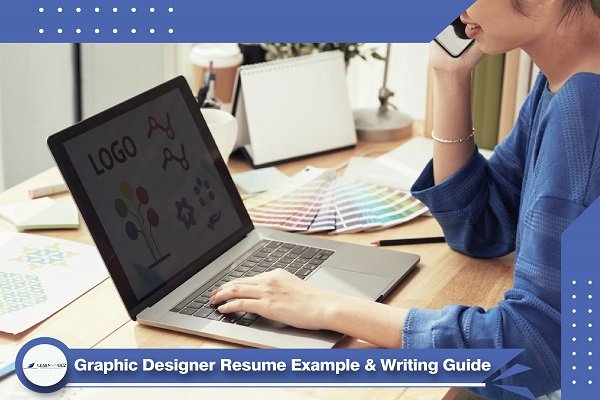Graphic Designer Resume Example & Writing Guide

Designing a good graphic designer resume is important for getting your dream job in the visual communications. In today’s business world, where looks and branding really matter, graphic designers are like important players who turn ideas into great visuals. It doesn’t matter if you’re an experienced designer or new to the field – your resume is the first thing employers see. This article will help you make a strong graphic designer resume that shows your skills, experience, and personal style.
The Importance of a Great Resume
In graphic design, how you present yourself matters a lot, just like your designs. The way your resume looks – the colors, fonts, and overall style – should show your design skills. But remember, it’s not just about being creative. It’s also important that your resume is easy to read and understand. Remember, your resume’s main job is to show your qualifications clearly and simply.
• Contact Information: Start with your name, phone number, email, and location. Make sure your email is professional because that’s how employers will get in touch.
• Summary or Objective: Write a short, strong statement about your skills, experience, and what you can offer. This part should show who you are professionally.
• Skills: Have a section just for your skills. Put in things you’re good at, like design software (Adobe Creative Suite, Sketch, etc.), fonts, layouts, branding, and maybe even coding languages like HTML and CSS.
• Experience: This is like the main part of your resume. List your jobs from newest to oldest. Put down the company name, your job title, when you worked there, and a short description of what you did and achieved.
• Projects: Talk about some projects that show how good you are. Say what the project was, your part in it, problems you solved, and what changed because of your work. You can mention both work projects and things you did on your own.
• Education: Tell about your schooling. The degrees you got, the school’s name, when you finished, and any special classes or honors. If you’re new to this, your education can show what you know.
• Certifications: If you have certificates for or in the field of graphic designing (like being an Adobe Certified Professional), put them here. These certificates show you’re serious about taking this job.
• Awards and Honors: If you have got prizes or were recognized for your designs, tell about it here. It’s like a badge that shows others think you’re great at what you do.
• Freelance Work: If you did design jobs for yourself, put them in a special part. Talk about the people you worked for, what projects you handled, and what good things happened because of your work.
How to use Design Elements?
Making your resume look good is important, while still being easy to read:
• Font: Use clear and nice fonts for titles and text. Stick to a few font styles to keep it looking organized.
• Colors: Use a small set of colors that match your personal style. Colors should make things look good, but not make it hard to read.
• Whitespace: Leave some empty space to make everything look balanced. Don’t put too much stuff, or it might be confusing.
• Visual Elements: Put some a few designs in your resume to show how creative you are. Like lines, little pictures, or symbols that match your design work.
• File Format: Save your resume as a PDF so it looks the same on different devices.
Customizing Your Resume
Make your resume fit the job you want. Read the job description and find the important words and skills they want. Put these in your resume, especially in the skills, summary, and experience parts. This shows you’re good for the job.
• Proofread: Check for mistakes like spelling or grammar errors. These can make you look not professional. Look at your resume twice.
• Online Portfolio: If you have a website showing your work, put the link on your resume. This lets employers see what you can do.
• Social Media: Make sure your social media and Linkedin looks good to employers. They might look at your profiles to learn more about you.
• Keep it Short: Try to make your resume just one page. Talk about the most important things for the job you want.
• Use Action Verbs: Start your sentences with strong words like “designed,” “made,” or “worked.” This makes your achievements sound better.
Your resume tells about how you’ve been creative, and achieved things. It tells about the things you’ve done, how you’ve gotten better at them. When you make your resume, remember it’s not only for getting a job, but also for showing you’re really good at design and have new and great ideas.
Your graphic designer resume is like a great piece of art – a place where you show how good you are at different things, what you’ve learned, and what you believe in when it comes to design. Like your designs tell stories, your resume talks about your journey – from school to awards that show you’re talented. If you follow the guidelines in this blog and make your resume, you will find the perfect job. Let your resume not just show your skills, but also your love for design. By following the above-given steps, hopefully, you will be able to find your dream job.
Contact us for resume writing services if you need any more help.

